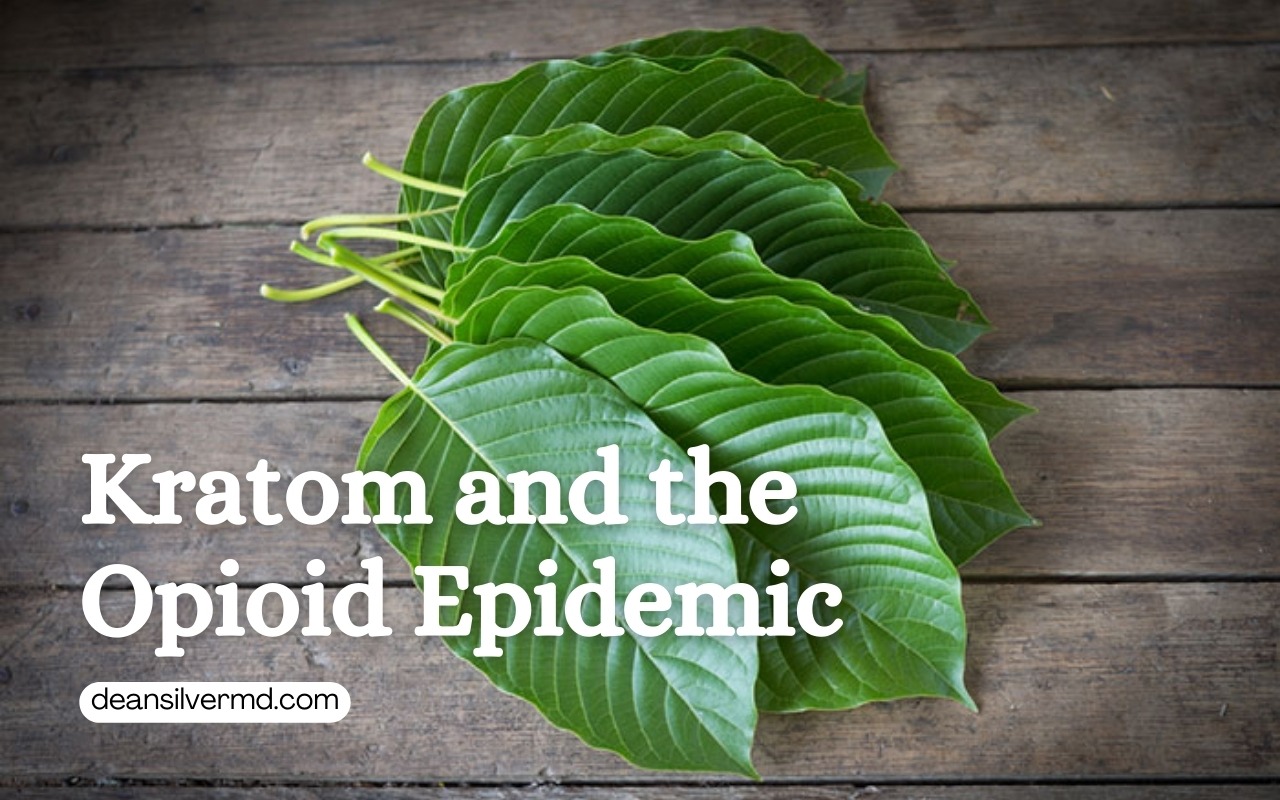
The opioid crisis remains one of the most significant public health challenges, driving ongoing research into alternative therapies for pain management and addiction recovery. One controversial option that has gained attention in recent years is kratom, a botanical supplement derived from the Mitragyna speciosa tree, native to Southeast Asia. While some claim that kratom offers a safer, natural alternative to opioids, concerns remain regarding its potential for dependence, lack of regulation, and long-term safety.
At DeanSilverMD.com, our wellness team prioritizes scientifically backed, patient-centered solutions to address addiction and chronic pain. This article examines the medical risks and benefits of kratom, exploring its role in the opioid epidemic and whether it should be considered a viable treatment option.
What is Kratom and How Does It Work?
Kratom contains mitragynine and 7-hydroxymitragynine, two active alkaloids that interact with opioid receptors in the brain. Depending on the dose, kratom can have both stimulant and opioid-like effects:
- At low doses, kratom acts as a stimulant, increasing energy, focus, and motivation.
- At higher doses, kratom exhibits sedative and pain-relieving properties, mimicking traditional opioids.
This dual nature has led some to view kratom as a harm reduction tool for opioid withdrawal and pain relief, while others warn about its addictive potential and safety concerns.
Can Kratom Help in Opioid Withdrawal and Addiction Recovery?
1. Potential Benefits for Opioid Withdrawal Relief
Many individuals turn to opioids for chronic pain management, post-surgical recovery, or injury-related conditions. However, long-term opioid use often leads to dependency and withdrawal symptoms. A 2020 study from Johns Hopkins University found that:
- 87% of kratom users reported relief from opioid withdrawal symptoms.
- 80% experienced reduced opioid cravings.
- 86% found kratom beneficial for pain management.
These statistics suggest that kratom may offer a bridge for individuals transitioning away from opioids, though more clinical research is needed.
2. Kratom for Chronic Pain Management
Chronic pain is one of the primary reasons individuals seek opioid alternatives. Kratom has been reported to provide analgesic effects similar to opioids without the same risk of fatal respiratory depression. However, there is limited clinical data to determine if kratom is a truly safe alternative to FDA-approved pain management strategies.
3. Risks of Kratom Use
Despite its potential benefits, kratom use is not without risks. Long-term consumption can lead to:
- Increased tolerance, requiring higher doses for the same effects.
- Withdrawal symptoms, including irritability, nausea, muscle aches, and fatigue.
- Psychological dependence, particularly among users who consume kratom daily.
- Potential liver toxicity and cardiovascular concerns in high doses or when used with other substances.
A 2021 study in Frontiers in Pharmacology documented cases where individuals using kratom for opioid withdrawal developed a dependency on kratom itself, raising questions about its true effectiveness as a harm reduction strategy.
Regulatory Landscape: How is Kratom Classified?
Kratom in the United States
Kratom is currently regulated as a dietary supplement under the Dietary Supplement Health and Education Act (DSHEA) of 1994, meaning it does not require FDA approval before being sold to consumers. This has led to concerns over product purity, potency, and safety, as kratom remains largely unregulated.
- Banned in: Alabama, Arkansas, Indiana, Rhode Island, Vermont, Wisconsin.
- Regulated in: Arizona, Georgia, Nevada, Utah (requiring quality control and age restrictions).
- Unregulated in most states, leading to variable product quality and potential safety risks.
The FDA and DEA have raised concerns over kratom’s safety, with the DEA attempting to classify it as a Schedule I controlled substance in 2016, though this was met with public opposition and ultimately withdrawn.
International Regulation of Kratom
While kratom remains widely available in the U.S., other countries have taken stricter regulatory approaches:
- Banned in: Australia, Sweden, Denmark, Finland, Japan, and Malaysia.
- Heavily regulated but permitted: European Union, China (subject to food safety laws and supplement regulations).
- Medical use permitted in Thailand, where it was previously illegal but is now available under medical supervision.
The European Food Safety Authority (EFSA) requires kratom manufacturers to adhere to strict safety testing and labeling regulations, ensuring better consumer protections than in the U.S.
The Future of Kratom in Medicine: Key Research Questions
The medical community remains divided on whether kratom should be embraced as a legitimate treatment for opioid addiction and chronic pain. Key questions that require further research include:
- Can kratom be standardized and regulated for medical use?
- What are the long-term effects of kratom consumption on neurological and organ health?
- How does kratom compare to FDA-approved opioid withdrawal treatments, such as methadone and buprenorphine?
- Can medical oversight improve kratom’s safety profile and minimize dependence risks?
Conclusion: Balancing Kratom’s Potential Benefits and Risks
Kratom represents a complex yet intriguing alternative in the fight against opioid addiction. While it may offer harm reduction benefits and pain relief, its lack of regulation, potential for dependency, and unknown long-term effects make it a controversial option.
At DeanSilverMD.com, we emphasize science-backed, personalized treatment strategies for addiction and pain management. If individuals are considering kratom, medical supervision, informed decision-making, and awareness of regulatory changes are crucial.
Final Takeaway: Kratom may hold promise as an opioid alternative, but until further research clarifies its risks and long-term effects, individuals should proceed with caution and medical guidance.
Also Read: Red vs. Green vs. White Kratom: A Science-Backed Guide to Their Unique Wellness Roles
